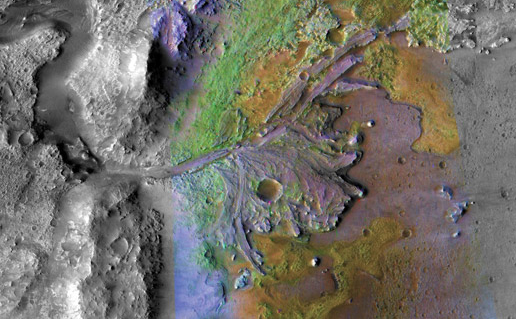NEWS | July 28, 2008
Rivers Ran Through It
Lakes and rivers with the potential to support life covered much of ancient Mars. Those areas where water deposited clay minerals would be good places to search for signs of past life. That's because clays tend to preserve organic matter, important for determining the potential for life.
Many of the clay-rich deposits were later buried by lava when Mars was much drier. In this image, the clay deposits, shown in green, are beside a delta that once emptied into a lake. A meteor exposed the buried clays when it carved a crater in the planet's surface.
It turns out Mars has thousands of clay-rich sites. Only further exploration will tell whether any of them might have harbored a former "river of life."
Image Credit: NASA/JPL-Caltech/MSSS

